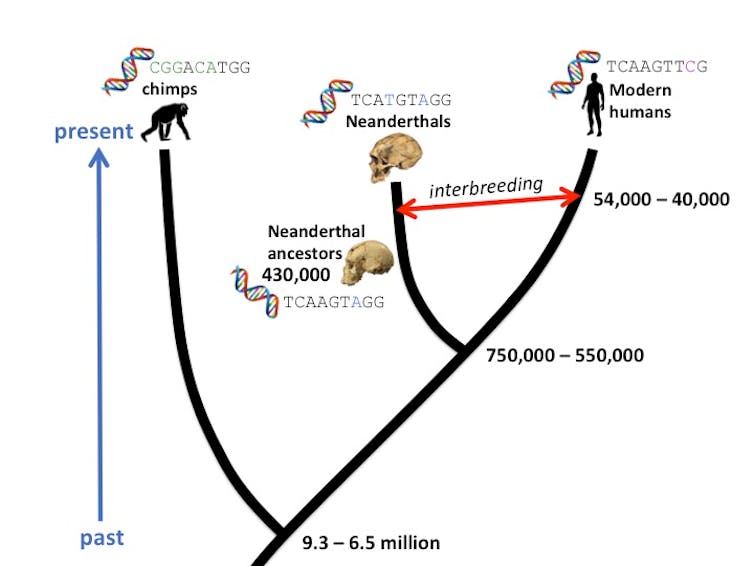 |
| 4/5. An evolutionary tree displays the divergence and interbreeding dates that researchers estimated with molecular clock methods for these groups. Bridget Alex, CC BY-ND |
DNA holds the story of our ancestry – how we’re related to the familiar faces at family reunions as well as more ancient affairs: how we’re related to our closest nonhuman relatives, chimpanzees; how Homo sapiens mated with Neanderthals; and how people migrated out of Africa, adapting to new environments and lifestyles along the way. And our DNA also holds clues about the timing of these key events in human evolution.
When scientists say that modern humans emerged in Africa about 200,000 years ago and began their global spread about 60,000 years ago, how do they come up with those dates? Traditionally researchers built timelines of human prehistory based on fossils and artifacts, which can be directly dated with methods such as radiocarbon dating and Potassium-argon dating. However, these methods require ancient remains to have certain elements or preservation conditions, and that is not always the case. Moreover, relevant fossils or artifacts have not been discovered for all milestones in human evolution.
Analyzing DNA from present-day and ancient genomes provides a complementary approach for dating evolutionary events. Because certain genetic changes occur at a steady rate per generation, they provide an estimate of the time elapsed. [...] theconversation.com







No hay comentarios:
Publicar un comentario